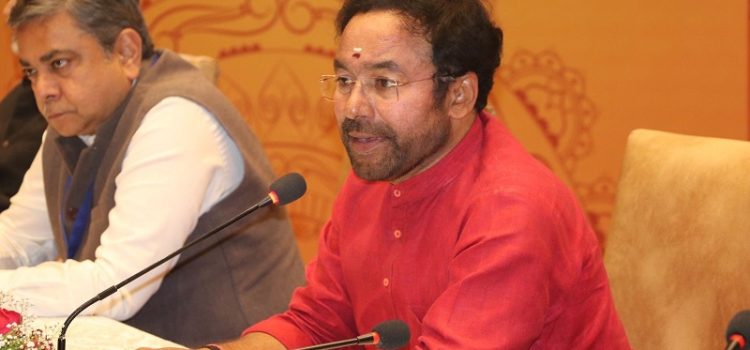In order to deliberate, ideate and devise strategies for promoting “Tourism in Mission Mode”, the Ministry of Tourism organized a two-day Chintan Shivir on March 28 and March 29 at New Delhi where all the States, Industry Associations and Industry leaders took part.
The agenda for discussions on the first day was set by Minister of Tourism, Culture and DONER, Shri G. Kishan Reddy. He outlined the vision of the Government to leverage tourism as a vehicle for socio-economic development, job creation and achieving sustainable development goals for the country. He stated that this is the most opportune moment to unveil a shared vision for future of India’s tourism, guiding its course for next 25 years to make India as the most sought-after travel destination in the world when India celebrates 100 years of Independence in 2047. He pointed out the three key pillars of developing tourism in mission mode – active participation of the States, Convergence of Government Programs and Public Private Partnerships. He stated that one major step would be to develop National Strategies and Models for providing guidance to the States in developing their tourism potential. The Ministry has recently formulated National strategies for development of various tourism sectors such as Rural Tourism, Adventure Tourism, MICE Tourism, Ecotourism, Medical Tourism, Sustainable Tourism. 
Shri Arvind Singh, Secretary, Ministry of Tourism, Government of India stated that the 02 day Chintan Shivir will provide a platform to all stakeholders to conduct fruitful interactions and share good practices followed across the country and a stage to share unique ideas involving technological solutions in travel sector, sustainability in tourism and responsible travel with the aim to take the benefits of tourism to the grass root level.

The first day`s agenda of discussions was divided into 6 Sessions deliberating on Incredible India@100 – Shared vision of Central Government, States and Industry, Policy Benchmarking and Ease of Doing Business, Investible Projects and Public Private Partnerships, “Global Best Practices and Capacity Building for Tourism Investments” by UNWTO, Developing MICE Tourism and Wedding Tourism and Innovation and Digitalization and Startups in Tourism Sector. Some of the key speakers were representatives from the industry stakeholders viz. FAITH, India Convention Promotion Bureau (ICPB) as well as from international organizations like World Tourism Organization (UNWTO) and the State Governments. UNWTO discussed the development of a Tourism Investment Strategy (TIS) through the UNWTO framework on Organizational, Attractiveness, and Promotion Strategy which will provide a structured approach to developing a comprehensive investment strategy that takes into account factors such as the local business environment, the potential for growth in the tourism industry, and the availability of financing options.
State of Rajasthan made a comprehensive presentation on granting of industry status to the tourism and hospitality sector along with benefits accrued to the industry from the same.
State Government of Maharashtra and Chhattisgarh showcased the investible projects in order to attract investment in tourism and hospitality sector. Union Territory of Lakshadweep Islands also shared successful case studies of public private partnership. In cognizance of the importance of the MICE sector as well as the Wedding Destination sector, a separate Session was kept on the two niche segments for deliberating on various policies, initiatives and strategies for development of MICE tourism and Wedding tourism in the Country. MICE Tourism brings higher revenue and year-round business for the destination overcoming seasonality. At the same time, MICE needs its own ecosystem before a destination can succeed as MICE destination. Wedding destinations are also fast emerging segment in India.
State of Telangana showcased how MICE tourism in the state of Telangana was being developed and promoted through the dedicated Hyderabad Convention Visitors Bureau.
During the event, the Ministry of Tourism also felicitated the States to recognize the best practices followed by them in six major categories under Swadesh Darshan Scheme.
The Government has recently announced to promote development of Tourism Sector in Mission Mode with active participation of the States and convergence of Government schemes and Public Private Partnership.
As an initiative of India`s G 20 Presidency, the Ministry of Tourism is organizing the 1st Global Tourism Investors’ Summit on May 17-19, 2023. Chintan Shivir will also provide opportunity to deliberate on the strategies and preparations for successful organization of 1st Global Tourism Investors’ Summit.




